I don’t remember the last time I was bored, especially when it comes to quilting. I have more projects in various stages than I can remember, and more ideas in my brain and sketchbook than I’ll ever get around to making. It seems I spend a lot of time trying to decide what to work on next! So, this block idea sums me up pretty well, and to be honest, I thought it up in one of those moments when I was trying to decide which on-a-deadline project I would work on next.
“All Directions” is a 12″ finished block. For each block, you will need:
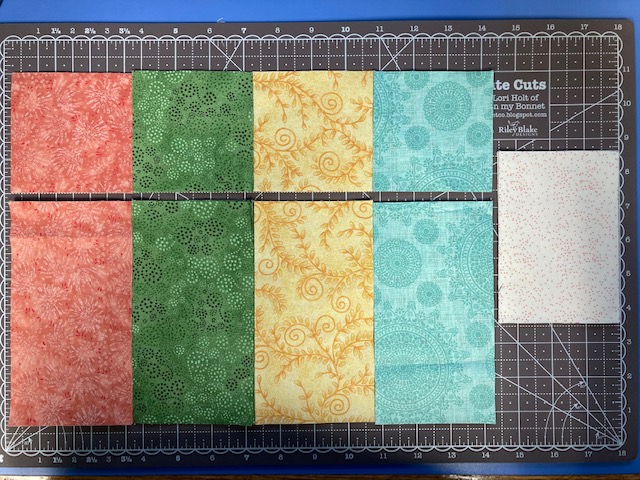
4 prints – one 3.5″ square and one 3.5″ x 6.5″ rectangle of each.
Background – eight 3.5″ x 5″ rectangles
To make this block, I also used the Creative Grids® Folded Corner Clipper tool. It allows me to skip the step of marking a diagonal sewing line when making the “stitch-and-flip” flying geese. I don’t know that it saves much time, but I’m a gadget geek, so I had to get one. I like it, but if you’re not comfortable sewing bias edges, it may not be for you.
STEP 1: Make the Flying geese pieces

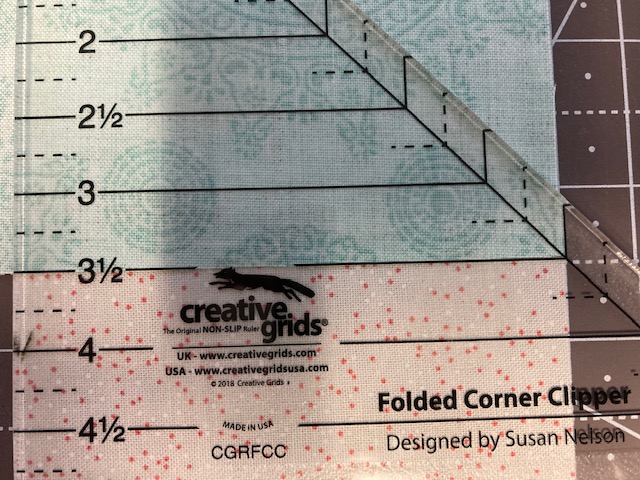
Lay a background strip down, face up and vertically. Lay a print rectangle face down and horizonally, as shown above. Align the top and right edges. Lay the tool on the corner area. Note that the 3.5″ line is along the bottom of the blue rectangle, and the corner fits into that little “hook” on the tool. Trim away the corner and sew the edge with a 1/4″ seam.

Open and press the seam. (The print rectangle probably won’t change color on you. )
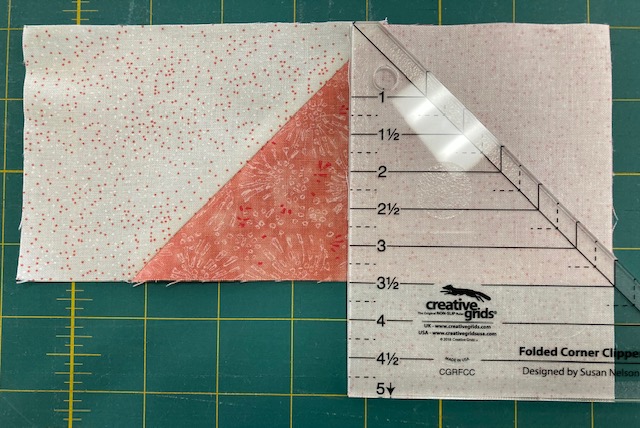
To do the other edge, lay the piece you just made right side up and horizontally, then lay a background rectangle face down and vertically, aligning the top and right corners again. Use the tool to trim away the corner, and sew the seam.

Repeat with all of your print and background rectangles.
STEP 2: Make the center 4-Patch.
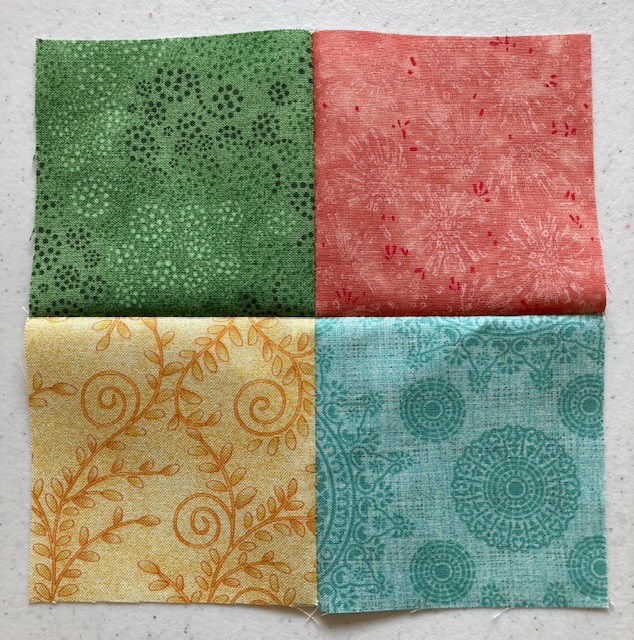
Use the 3.5″ print squares to make a 4-patch.
STEP 3: Here comes the fun part!
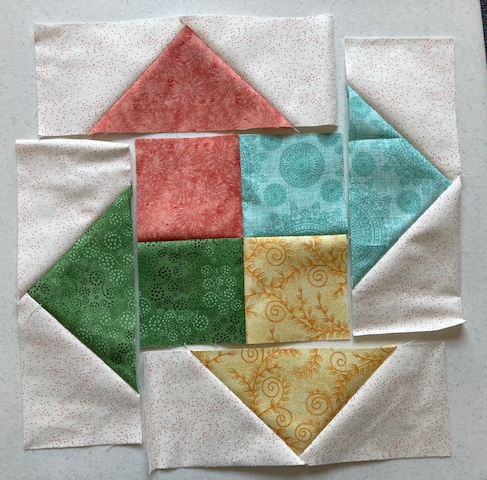
Lay the 4-Patch down, and lay the flying geese strips around it as shown, matching the prints. We’re going to use a partial seam technique to sew the strips to the 4-patch. It’s not hard, I promise.
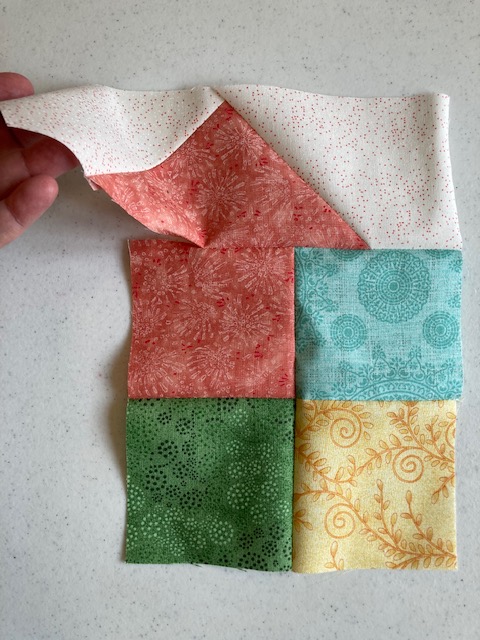
The whole secret is this first seam. Align the right edge of the pink flying geese strip with the right edge of the blue square. Starting at the right edge, sew the seam, STOPPING about an inch from the left edge of the pink square. We’ll just leave that end loose for the time being. Press just the blue/white section of that seam.
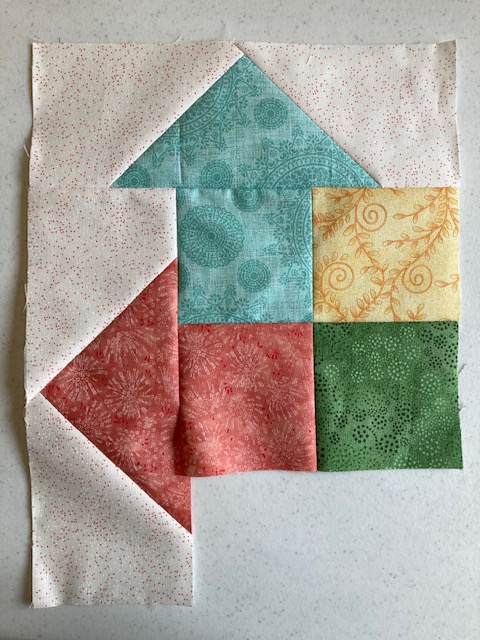
Now when you lay the blue geese strip on the block, you can sew the entire seam!
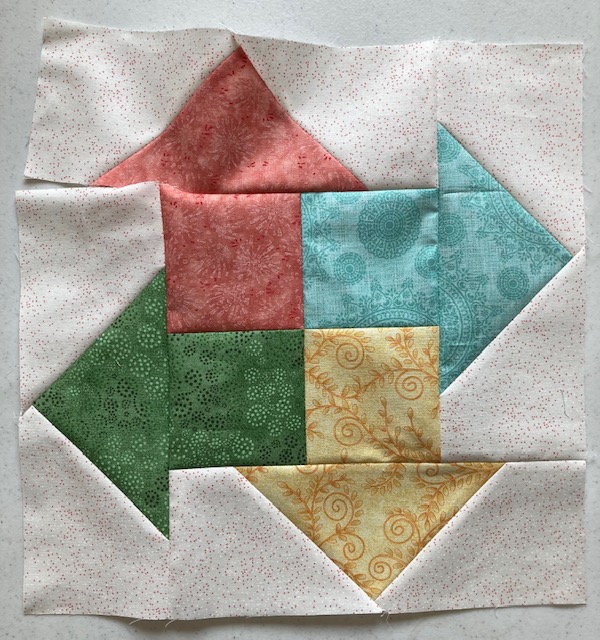
Repeat with the yellow and green geese strips. See where this is going? Now you can go back and finish sewing that first seam on the pink geese strip. Clever, yes? Note: It’s a good idea to overlap a few stitches when you sew that last seam.
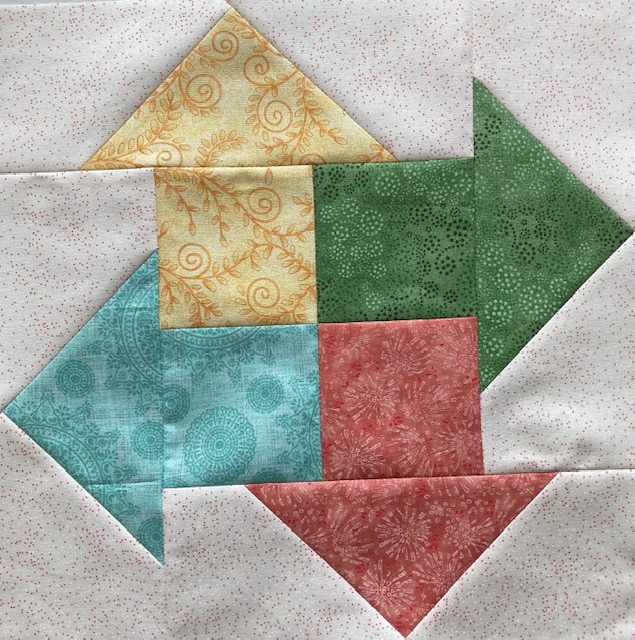
Give it a good pressing and you should have a 12.5″ “All Directions” block.
****************************************
If you like this block, feel free to share this post on social media, and please, click the “Follow” button at the top of the post to be notified whenever a new post goes live. It doesn’t happen as often as I would like, but there’s almost always a block or quilt pattern for you.
Meanwhile, check out my Facebook Page and Instagram (I’m still trying to get the hang of IG.)

Be watching for an upcoming blog post on Rolling Along a new title just published by Martingale Publishing, and featuring a dozen Jelly Roll quilt projects “baked up” by the Moda Bake Shop Chefs, including me. You might even win a free copy of the book!



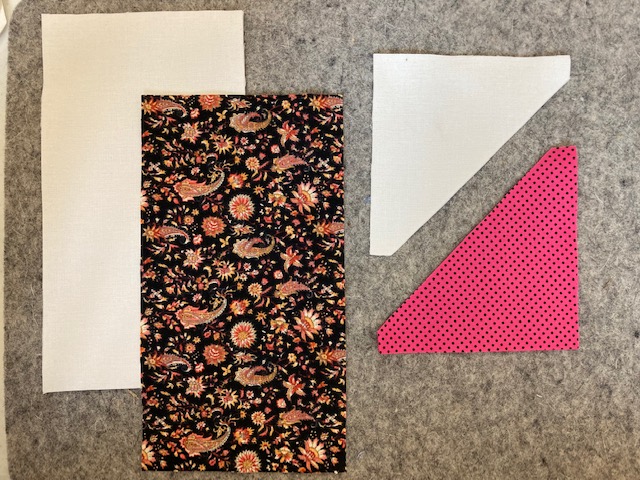



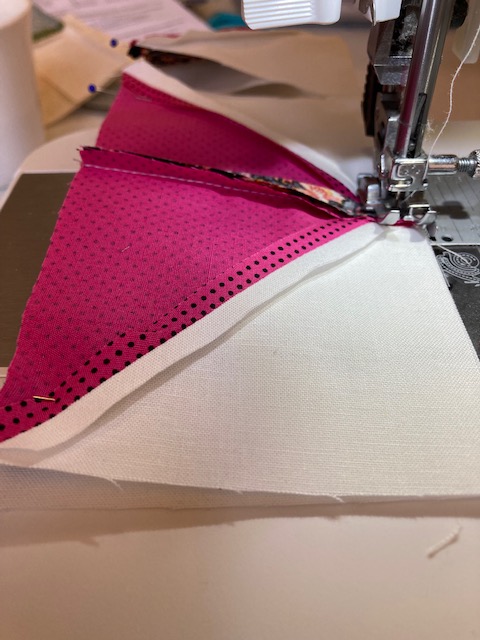
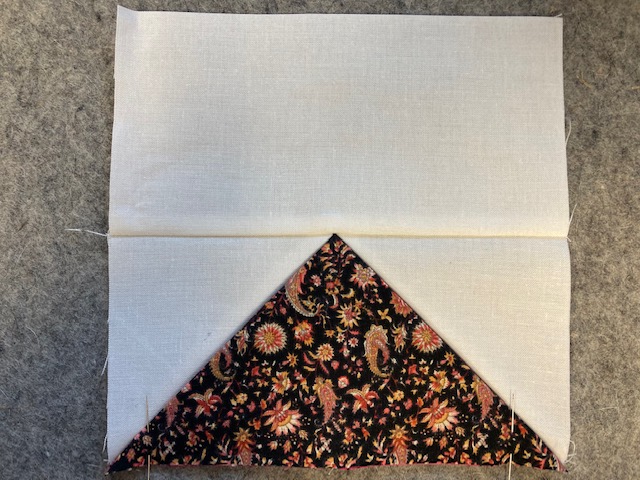
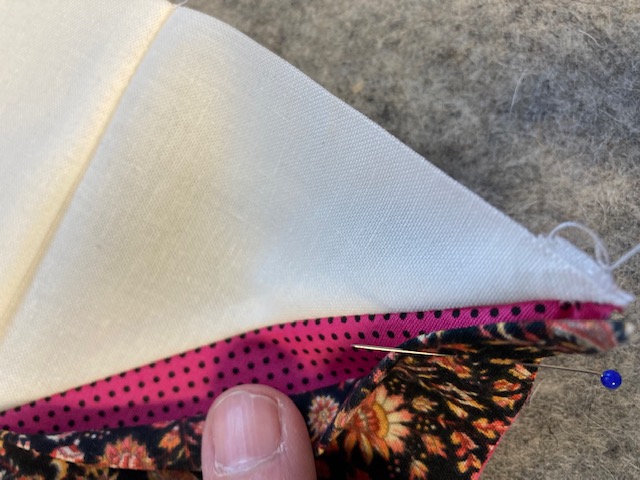

 When working with the pre-cut scraps in my
When working with the pre-cut scraps in my 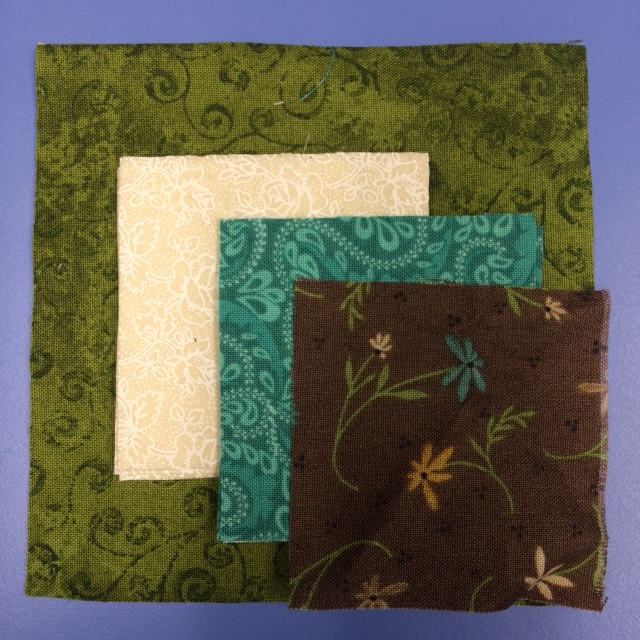 For each Blooming 9-Patch, you will need:
For each Blooming 9-Patch, you will need:




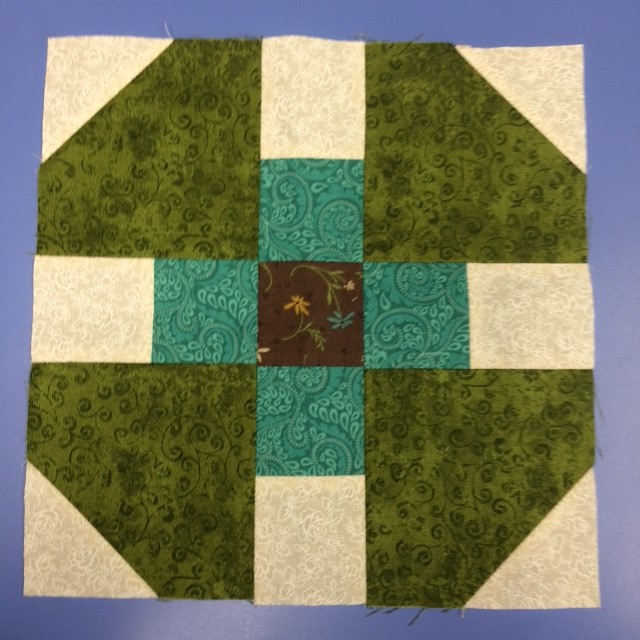
 Here are the TQ pieces needed for this block:
Here are the TQ pieces needed for this block: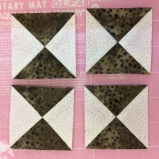
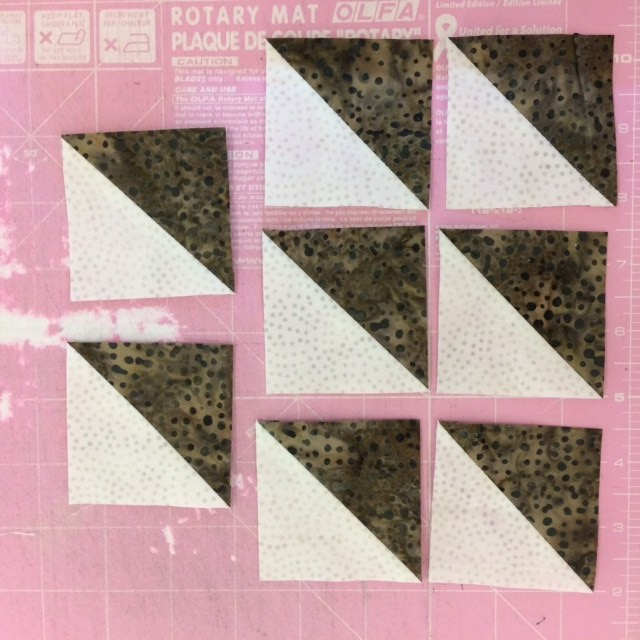
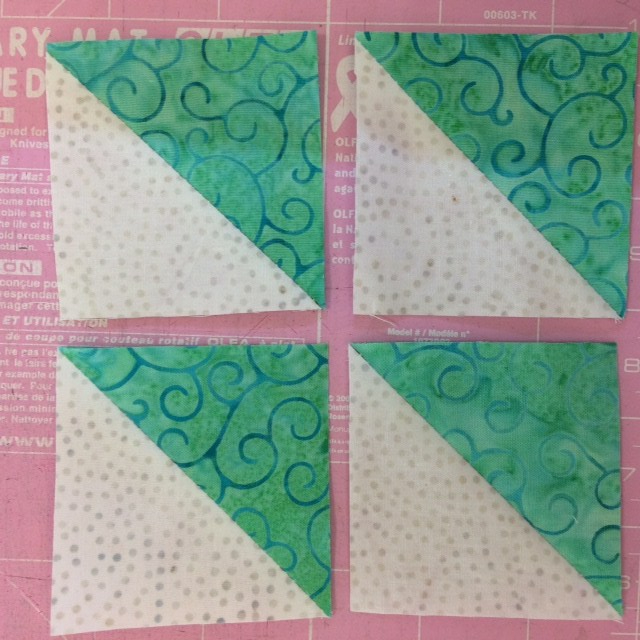 Cut the remaining brown squares, white squares and the turquoise squares in half diagonally. Sew into eight brown and white half-square triangles (HSTs) and four turquoise and white HSTs. Trim each to 2.5″.
Cut the remaining brown squares, white squares and the turquoise squares in half diagonally. Sew into eight brown and white half-square triangles (HSTs) and four turquoise and white HSTs. Trim each to 2.5″.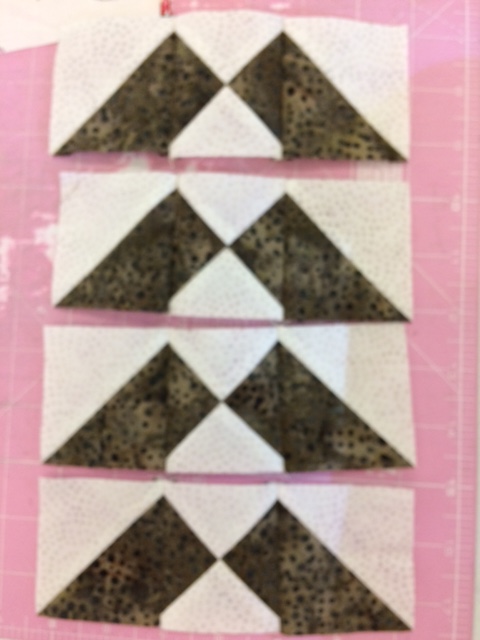 Sew a brown and white HST to the brown sides of each QST as shown.
Sew a brown and white HST to the brown sides of each QST as shown.
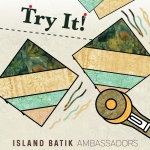 For the Island Batik Ambassadors “Try It” Challenge, I’m pleased to share a technique for making half-square triangles (HSTs). I wish I had thought of it, but all of the credit goes to Beth Helfter of
For the Island Batik Ambassadors “Try It” Challenge, I’m pleased to share a technique for making half-square triangles (HSTs). I wish I had thought of it, but all of the credit goes to Beth Helfter of 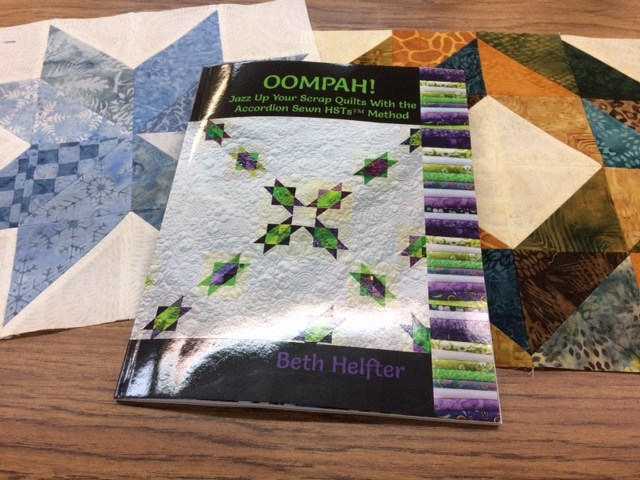







 This week the United States celebrate Independence Day, our neighbors celebrate Canada Day, and the Island Batik Ambassadors celebrate the release of the Freedom collection with a
This week the United States celebrate Independence Day, our neighbors celebrate Canada Day, and the Island Batik Ambassadors celebrate the release of the Freedom collection with a





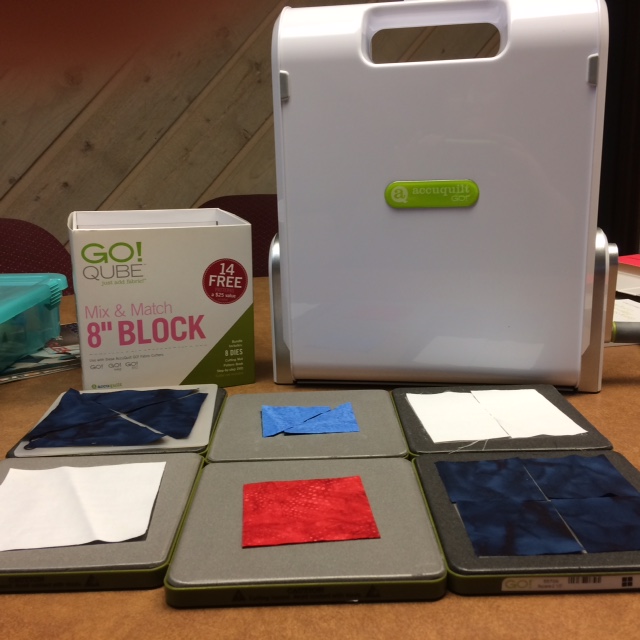


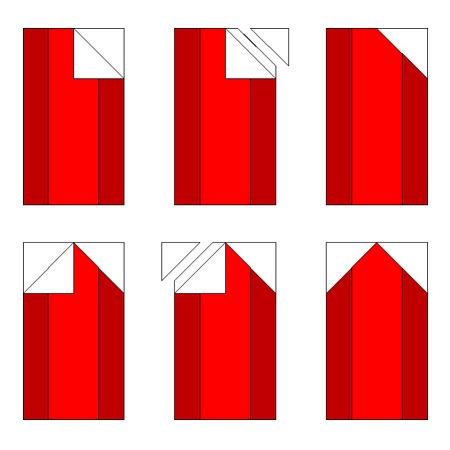
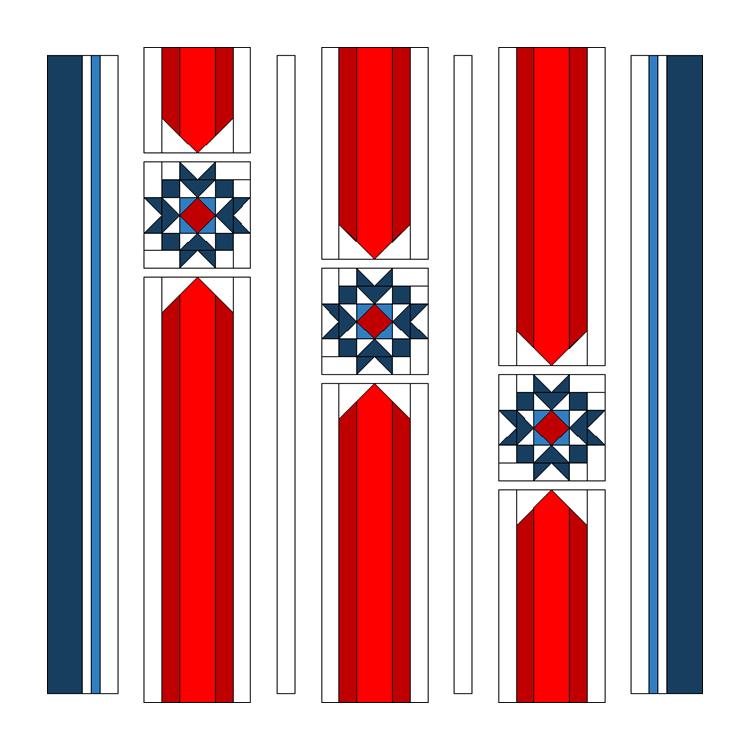
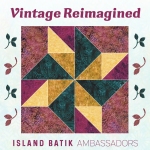 The March challenge for the Island Batik Ambassadors was “Vintage Reimagined.” We were asked to design a project inspired by a vintage quilt.
The March challenge for the Island Batik Ambassadors was “Vintage Reimagined.” We were asked to design a project inspired by a vintage quilt.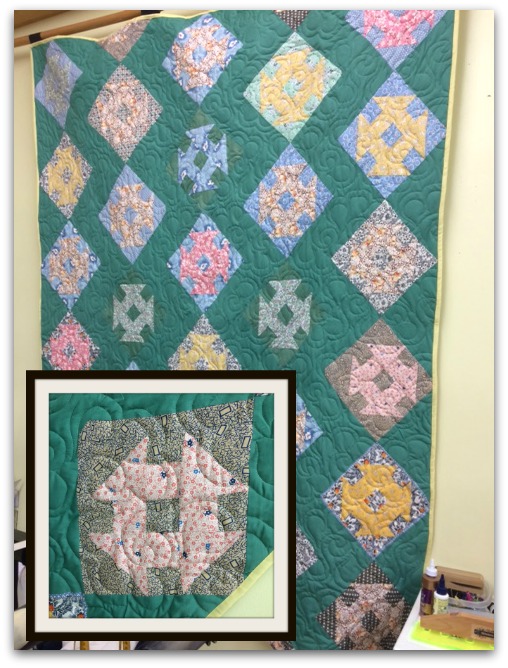 The quilt I chose as inspiration is a top pieced decades ago by Tilda Adamson, the grandmother of my friend Art Adamson.
The quilt I chose as inspiration is a top pieced decades ago by Tilda Adamson, the grandmother of my friend Art Adamson.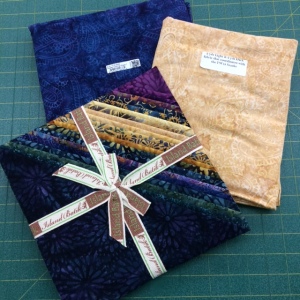 For my project, I used the Island Batik “Twilight Chic” collection. I had a stack of 40 10″ squares, plus 2 yards each of a dark blue and wheat-gold coordinate, all supplied by Island Batik.
For my project, I used the Island Batik “Twilight Chic” collection. I had a stack of 40 10″ squares, plus 2 yards each of a dark blue and wheat-gold coordinate, all supplied by Island Batik.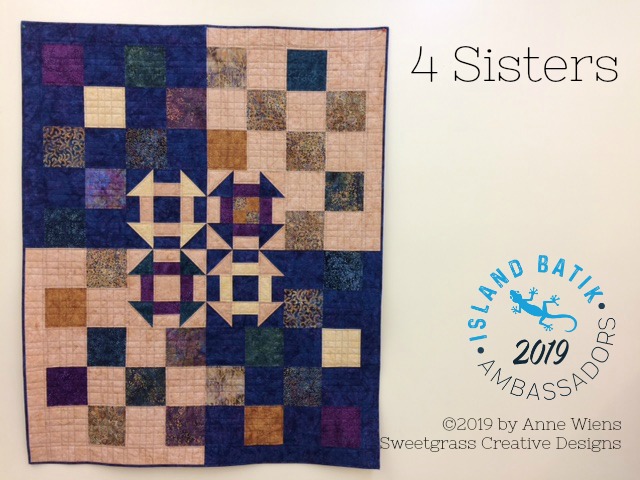
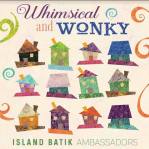 Our final Island Batik Ambassadors challenge for the 2018 calendar year was to make a project that is whimsical and/or wonky. Well, it’s been that kind of year, so wonky it is.
Our final Island Batik Ambassadors challenge for the 2018 calendar year was to make a project that is whimsical and/or wonky. Well, it’s been that kind of year, so wonky it is. 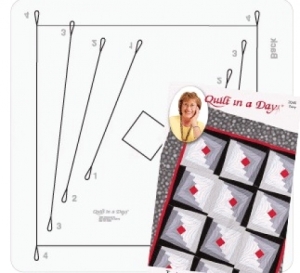 That and the fact that I have this
That and the fact that I have this 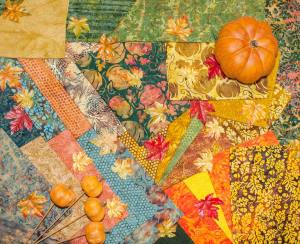 The Wonky Log Cabin pattern calls for 2.5″ strips of fabric to build the blocks. I had quite a few strips from the Vintage Morris collection left over from my
The Wonky Log Cabin pattern calls for 2.5″ strips of fabric to build the blocks. I had quite a few strips from the Vintage Morris collection left over from my 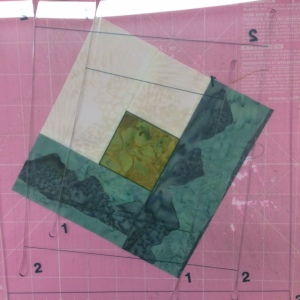
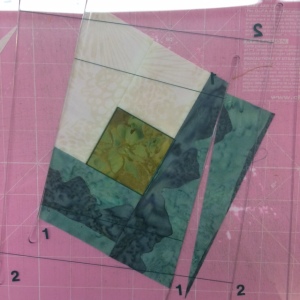
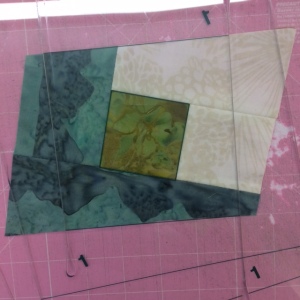
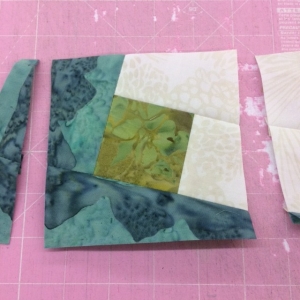
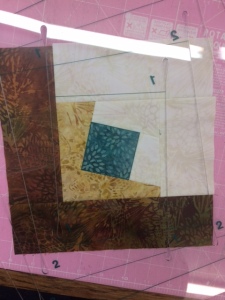
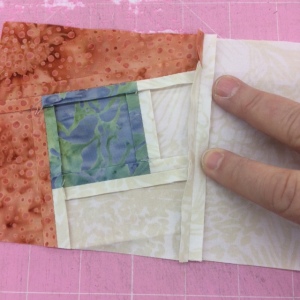
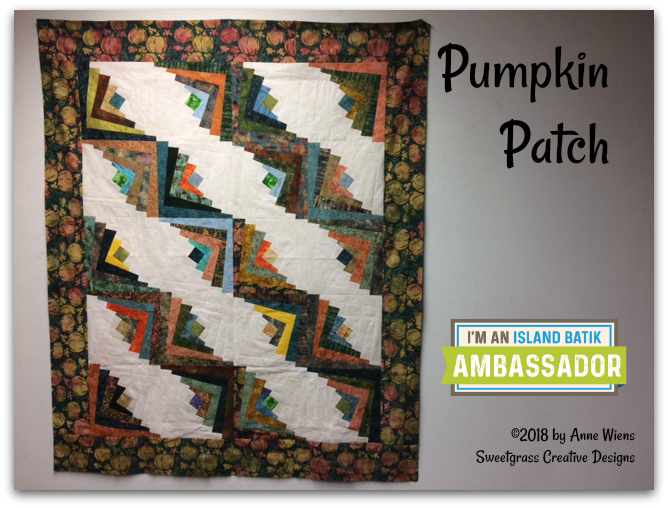
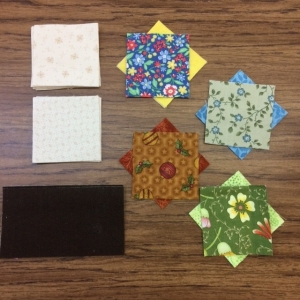 To make a 4 by 4-Patch block, you will need:
To make a 4 by 4-Patch block, you will need: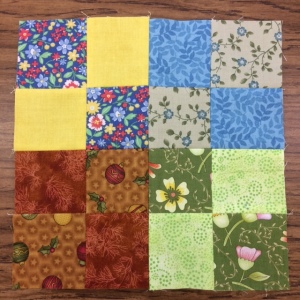 First, sew the medium print squares into 4-Patches and sew the 4-Patches into a Double 4-Patch.
First, sew the medium print squares into 4-Patches and sew the 4-Patches into a Double 4-Patch.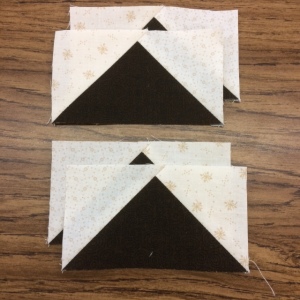 make four flying geese, using the Stitch-and-Flip method.
make four flying geese, using the Stitch-and-Flip method.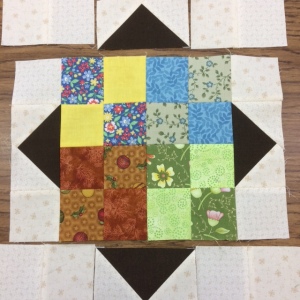 Sew a light square to both sides of two of the geese. Sew these to the sides of your double 4-patch.
Sew a light square to both sides of two of the geese. Sew these to the sides of your double 4-patch.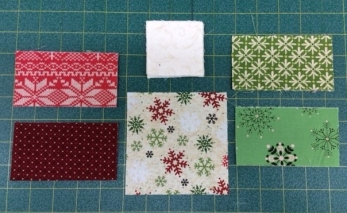 For each Wild Goose Chase block, you will need:
For each Wild Goose Chase block, you will need: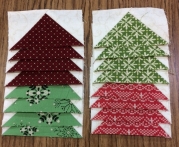 Step 1 is to make sixteen Flying Geese units, using the white squares and print rectangles. I used the same Stitch-n-Flip method as in the
Step 1 is to make sixteen Flying Geese units, using the white squares and print rectangles. I used the same Stitch-n-Flip method as in the 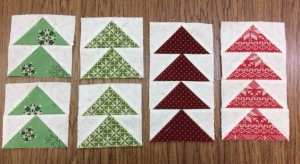 Step 2 is to sew the Flying Geese units together. I sewed my green geese into pairs, and sewed the red geese into strips of four.
Step 2 is to sew the Flying Geese units together. I sewed my green geese into pairs, and sewed the red geese into strips of four.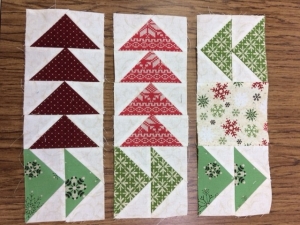 Step 3 is to sew three rows.
Step 3 is to sew three rows.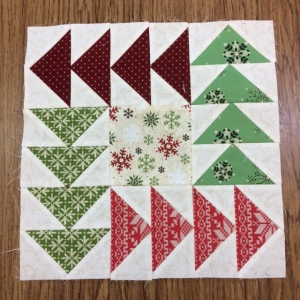 Step 4 is to sew the three rows together to complete your Wild Goose Chase block.
Step 4 is to sew the three rows together to complete your Wild Goose Chase block.


